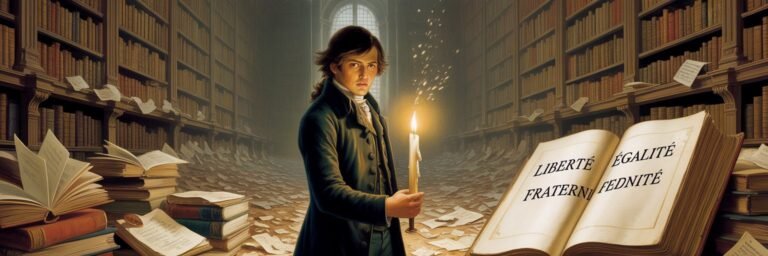INTRODUCTION
Delving into the annals of history, the intellectual trajectory of humankind is studded with ingenious inventions. Behind each of these are compelling narratives—stories of grit, determination, brilliance, and sometimes, a sprinkling of serendipity. However, beneath these tales of inventiveness, lies a layer of mysteries and controversies: unconfirmed attributions, contested origins, and unresolved loopholes.
This article will dive deep into these unsolved mysteries—those baroque questions of provenance and conception—that surround some of the world’s most famous inventions.
HISTORICAL BACKGROUND
The history of inventions is undeniably as old as the human endeavor in engineering the world to their needs. Olduvai Gorge in Tanzania, considered the cradle of humanity, houses the earliest evidences of rudimentary stone tools, carved by our ancestors 2.6 million years ago—an invention revolutionary to the survival of the species. As civilization advanced, so did the sophistication of invention, resulting in landmark breakthroughs such as the wheel, fire, the printing press, the steam engine, electricity, the telephone, the computer, and many more. Every epoch of history, hence, bears the imprints of essential inventions, etching their invaluable contribution in the narrative of human advancement.
THEORIES AND INTERPRETATIONS
Unraveling the mysteries within inventions isn’t only about acknowledging the inquisitive mind, but also about deciphering the compiled layers of various theories and interpretations that shroud their origin. One such invention mired in controversy is the telephone. Though Alexander Graham Bell is universally considered the inventor, a recent wave of historians suggests it may have been Elisha Gray who deserves the credit. The patent caveat Gray filed on February 14, 1876, included a diagram showcasing a water-transmitting design eerily similar to that of Bell’s telephone. However, the patent office designated Bell’s application priority, creating ripples of accusation and allegations of corruption that remain unresolved to this day.
The mystery surrounding the invention of the radio is equally enthralling. Guglielmo Marconi often takes credit for it; however, Nikola Tesla alleged that Marconi’s model used 17 of Tesla’s patents. While Marconi was recognized with a Nobel Prize, recent studies have shifted the narrative, leaning towards the genius of Tesla.
MYSTERIES AND CONTROVERSIES
Mysteries deepen and controversies amplify when inventions have impacts of significant scale, particularly those igniting the atomic age. Werner Heisenberg, a physicist at the heart of Nazi Germany’s nuclear program, remains an enigma within this historical puzzle. Despite being a Nobel laureate and having the necessary knowledge to build an atom bomb, Heisenberg’s role in hindering Hitler’s atomic ambitions is clouded in mystery. Was he covertly sabotaging the project, or was he genuinely incapable of accomplishing it? Declassified Allied intelligence documents and scholarly interpretations present a largely unresolved conundrum circle around his professional conduct during World War II.
SYMBOLISM AND CULTURAL SIGNIFICANCE
Such inventions and their mysterious origins are not just facts lost in the annals of history. They represent symbolism and carry cultural significance, weaving their complex narratives into societal fabrics. For instance, Bell’s telephone or Marconi’s radio have not only transformed communication but have reset societal structure, affecting economics, politics and culture alike. Whether it was Bell or Gray, Marconi or Tesla, the indelible footprints of these inventions withstand the test of time and uncertainty, imbuing profound symbolic and practical implications for societies around the world.
MODERN INVESTIGATIONS
The quest for answers to these unsolved mysteries has sparked myriad modern investigations—disciplinary studies, investigative journals, and even court cases. For instance, dedicated historians across the globe tirelessly work on documents, letters, patents, blueprints, and historical testimonies, hoping to unearth hidden answers about these inventions. In 2002, in honor of Marconi’s achievements, the U.S Congress recognized January 11 as ‘National Inventors’ Day’, yet the debate regarding the actual inventor of the radio persists, with many asserting Tesla’s rightful claim.
LEGACY AND CONCLUSION
Indeed, these mysteries enshrouding famous inventions add a mystique that intrigues historians, archaeologists, and curious individuals alike. While answers may remain elusive, the legacy of these inventions remains unimpeachable. The telephone, the radio, nuclear technology, irrespective of their disputed origins, have irrevocably altered the course of human civilization. These inventions’ cultural implications and significance continue to ripple across the world, shaping our interpersonal communication, media consumption, and geopolitical affairs. The controversies surrounding them serve as reminders of the labyrinthine processes that often accompany human ingenuity.
Ergo, by unwinding these mysteries, we not only delve into the annals of our history, but also gain a profound understanding of our culture, evolution and identity—relishing the juxtaposition between known historical narratives and suspenseful undercurrents of unresolved conundrums. As we continue to unravel these puzzles, we underline the inherent human propensity for curiosity and continual exploration—traits that have led us to the realm of ceaseless invention.
At the heart of this exploration lies a simple yet powerful realization—the mystery in history is often as intriguing as history itself. It is this enduring enigma, this persistent pursuit of knowledge, which propels us towards understanding our collective past and, in doing so, chartering the course of our future.






